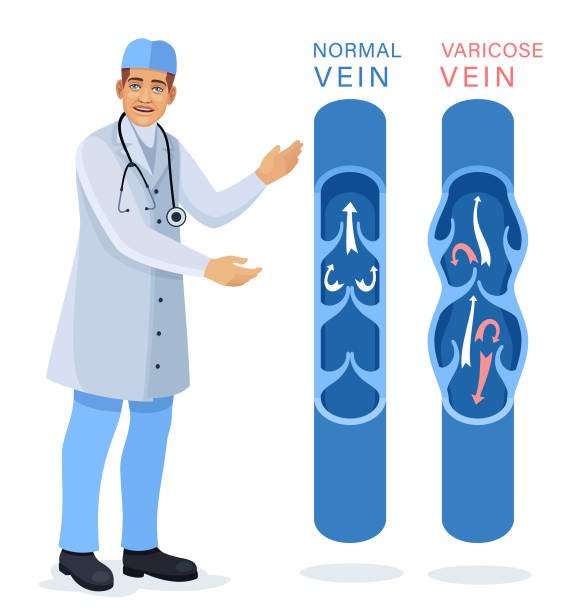
Can Varicose Veins be Improved? These Tips Can be Soothing!
When varicose veins begin to appear in the legs due to long-term standing, sitting, or being overweight, the veins will protrude and float to the surface of the skin. This will not only affect the appearance, but in severe cases, complications may occur, and even ulceration and amputation, so it should not be underestimated. Severity of varicose veins. So can varicose veins be improved? Is surgery needed? We’ll teach you how to quickly relieve varicose veins!
Why do varicose veins occur? Who is prone to varicose veins?
Under normal physiological conditions, the venous blood vessels of the lower limbs maintain blood return through valve closure to avoid the possibility of reflux. When there is a problem with the valve, blood will flow back and accumulate in the veins of the lower limbs. In the long run, the diameter of the veins will become thicker and emerge from the surface of the skin, forming varicose veins.
As for who is more likely to have varicose veins? Let’s check whether you are at risk of varicose veins together:
- Family history
- People who stand or sit for long periods of time
- Middle-aged and elderly women
- Overweight person
- Long term constipation
- People who wear high heels for a long time
- Long-term use of birth control pills

Varicose vein symptoms
Varicose veins may not be noticeable in the early stages, but some people may experience the following symptoms:
- Itchy skin on calf
- Swelling of the legs
- Heaviness in legs
Afterwards, swollen blue veins will appear on the back of the calf and the inside of the leg when standing, and they will become more and more obvious. It will be more serious in women before and after their menstrual period. As varicose veins become more severe, the following symptoms will appear:
- Skin with protruding veins may itch
- Pain sensation
- Blood pooling in the ankle turns purple
- Venous rupture and bleeding

Tips to improve varicose veins
Severe varicose veins can cause many complications, such as venous thrombosis, phlebitis, venous hemorrhage and rupture leading to bleeding or ulcers, and even amputation. Therefore, you should find out how to improve varicose veins before it gets worse:
- Wear elastic stockings:
The elasticity of elastic stockings can give appropriate compression to the veins, leaving no room for the veins to continue to expand. Wearing elastic stockings for a long time can effectively alleviate the discomfort caused by varicose veins. Since you need to wear it for a long time, tighter is not always better. It is recommended that the material should be breathable and sweat-wicking. - Maintain a normal weight:
The fat in overweight people has weak support for blood vessels and is prone to varicose veins. - Wear less tight clothing:
Tight jeans or stretch pants can compress the veins, causing most of the blood to accumulate in the lower limbs, leading to varicose veins. - Move more:
Moving your lower body more can promote blood circulation and metabolize waste. - Leg massage:
When applying lotion, you can massage your legs to reduce edema. Massage can also promote blood vessels and surrounding lymph, helping to relieve soreness
Surgical treatment of varicose veins
In addition to improving varicose veins in daily life, surgical treatment is also required to avoid worsening of varicose veins when necessary. Surgical treatment can be divided into two types:
- Traditional surgical treatment:
Make several 1 to 3 cm incisions under the diseased blood vessels, and use vascular strips to extract the diseased blood vessels. However, traditional surgery involves large wounds and requires deep anesthesia. The wound is more painful, unsightly and prone to recurrence. - Vascular laser treatment:
A laser catheter is inserted through a tiny incision of 0.1 to 0.2 cm, and the diseased blood vessels are closed through the front end of the catheter. The surgery usually only takes about 30 to 40 minutes, the wound is smaller, and the postoperative care is easier than traditional surgery.
In addition, sclerosing agents can also treat varicose veins. Sclerosing agents are suitable for patients with veins within 1 to 3 mm. Sclerosing agents are injected into the veins to destroy endothelial cells, causing inflammation and blood clots, eliminating varicose veins. However, sclerosing agents have relatively side effects. Some patients may experience allergies, local pain, or even pigmentation.













